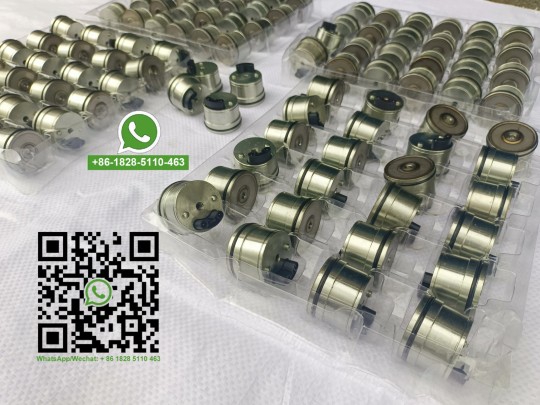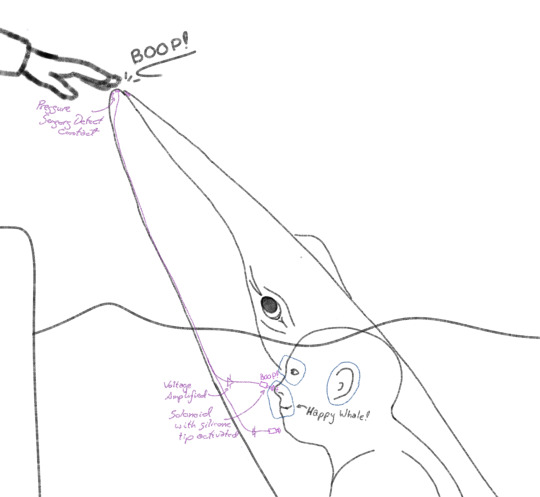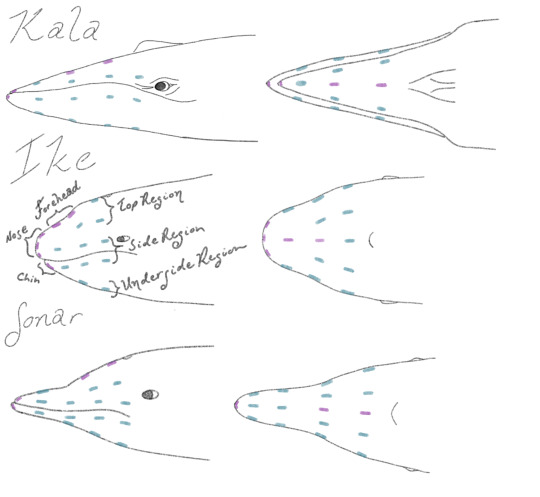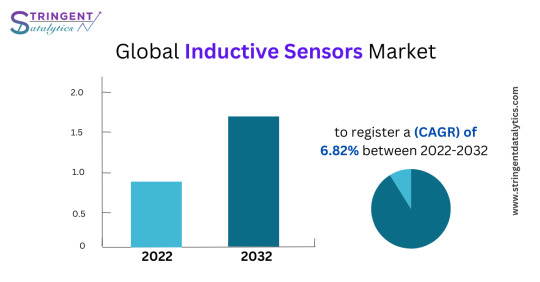#inductive sensors
Explore tagged Tumblr posts
Text
#inductive proximity sensors#inductive proximity sensors in lexington#inductive proximity sensor#inductive sensors#proximity sensors
0 notes
Text
wow not that i like. FORGOT. that driscoll is my Precision of Vocabulary character. but. damn they know WAY more terminology than i do lmao
#text#personal#writing#in btw#driscoll#the number of [bracketed words] i keep coming across as i'm typing up the handwritten pages is fucken wild#bed runner CAN be runner or it can be bed scarf#'tine' is the more anatomically correct term than 'prong' for antlers#lowkey missing alicia for her Making Shit Up Constantly lmao#girl where ARE you i need you#i did literally also just purchase A FIELD GUIDE TO ROADSIDE TECHNOLOGY to help with some of this btw#very neat little book#i didn't realize the car sensors at traffic lights were induction based (i thought they were like. weight based)#ANYWAY#I HAVE MY VOCAB I'M CARRYING ON#HOW IS IT 11:30#WHY DOES EVERYTHING TAKE LONGER THAN YOU THINK IT WILL#ez i'm gonna be late for wordles lmao
2 notes
·
View notes
Text
youtube
Melexis: Introducing Induxis (Fully Integrated Inductive Switch)
https://www.futureelectronics.com/m/melexis . Discover the first Induxis® switch, an inductive switch that fully integrates the coils. Contact-less, magnet-less, and stray field immune, this solution simply detects any conductive target (e.g. metal). It is ideal for safety applications in the area of electrification. https://youtu.be/ilXKkf_K30U
#Induxis#Melexis#Fully Integrated Inductive Switch#Melexis Induxis#Inductive switch technology#Sensor innovation#Automotive electronics#Inductive sensing technology#contactless#magnetless#stray field immune#Youtube
0 notes
Text
Everything you need to know about Inductive Proximity Sensor
With the assistance of an Inductive proximity sensor, a metallic object is detected that is available on the active side. The sensor operates on the principle of inductance. In this, with the help of fluctuating current, EMF is induced on the target object.
Thus, proximity sensors help to detect various ferrous targets which include mild steel. It has four major components which include oscillator, coils, Schmitt Trigger, and output amplifier. It has two main versions i.e. Unshielded and Shielded.
Unshielded Inductive Proximity Sensor
The electromagnetic field that is generated by the coil is perhaps unrestricted and thus you get great sensing and wider distances.
Shielded Inductive Proximity Sensor
The electromagnetic field that is generated is present on the front where the sensor coil sides are covered up.
Thus, it is recommended that you purchase a sensor from a good Inductive Proximity Sensor manufacturer in India.
Inductive Proximity Sensor – What is the working Principle?
The oscillator makes use of an oscillating and symmetrical magnetic field that radiates from the coil array and ferrite core at the sensing fence. So, when the ferrous target enters into the magnetic field, then independent and small electrical currents are induced into the surface of the metal.
Further, inductive proximity sensor tends to have a frequency range of about 10 to 20 Hz in AC as well as 500 Hz to 5 kHz in DC. Also, due to the limitations in the magnetic fields, it tends to have a narrow sensing range which on average is about 60 mm.
Thus, there are significant load on the sensor, and thus amplitude of the electromagnetic field is significantly decreased. Likewise, if the metal object tends to move near the proximity sensor, then the eddy current would increase accordingly. So, the oscillator load would very well increase while reducing the amplitude of the field.
Inductive Proximity Sensors – What are the advantages?
It offers contactless detection
It is resistant to several conditions which include dirt and dust
Inductive Proximity Sensors are versatile and capable of metal sensing
It tends to have a high rate of switching
Moving parts are not available which means you tend to have a long service life
Inductive Proximity Sensors – What are the disadvantages?
The detection range is not available to a large extent and the range which is maximum allowed is 60mm.
Only Metal Objects can be detected
Various external conditions such as cutting fluids, extreme temperatures, and chemicals through which sensor performance can be affected.
Inductive Proximity Sensors – What are the applications?
Assembly lines, Machine tools, and automotive industry
Moving parts that are of high-speed
Metal parts detection in a harsh environment
What is the role of Inductive Proximity Sensors in Industrial automation?
The role of Inductive Proximity Sensors in Industrial automation is perhaps to check out the metal components. For instance, an inductive proximity sensor is used to check that the bottle has been capped properly.
Another important use of the inductive proximity sensor is detecting the right position of the end stop or actuator. So, we can say that an inductive proximity sensor is used to detect the position and presence of the item. Moreover, the sensor is used such that the products can be counted. Thus, it can have a great impact on efficiency and productivity. Lastly, it also boosts the production process safety.
#inductive type proximity sensor#proximity sensor manufacturers#proximity sensor manufacturers in india
0 notes
Text
Proximity Sensors: Enhancing Efficiency and Safety Across Industries
What are Proximity Sensors
Proximity sensors identify an object's presence even in the absence of physical touch. Without coming into direct touch with the item, they are made to recognize when it enters the sensor field. In a variety of manufacturing applications, proximity sensors are used to identify the proximity of metallic and non-metallic items.
How Do Proximity Sensors Function?
In the least complex terms, proximity sensors work by communicating information about the presence or movement of an item into an electrical sign. They yield an ON signal when the article enters their reach. There are a few critical contrasts in the manner that different closeness sensors work, as made sense below:
Capacitive Nearness Sensor Working Guideline Capacitive
Proximity sensors work by identifying changes in capacitance between the sensor and an item. Factors, for example, distance and the size of the article will influence how much capacitance. The sensor just recognizes any progressions in the limit produced between the two.
Inductive Nearness Sensor Working Standard
Inductive sensors work by recognizing vortex flows causing attractive misfortune, created by outer attractive fields on a conductive surface. The discovery curl produces an air conditioner attractive field, and impedance changes are distinguished because of the created whirlpool flows.
Attractive Vicinity Switches Working Rule Attractive
Proximity switches are similarly basic and clear. The reed end of the switch is worked by a magnet. At the point when the reed switch is enacted and ON, the sensor additionally turns ON.
It is additionally significant that proximity sensors are not impacted by the surface shade of the article identified. They depend simply on actual development and the movement of an item, so its tone doesn't assume a part in that frame of mind of the sensor.
The Role of Proximity Sensors in Modern Industries
Sensors have become indispensable in today's automated world, serving important functions such as tracking and positioning control. In this field, location and proximity sensors are reshaping several industries. By detecting nearby vehicles in the automotive industry and accurately tracking the location of delivered packages in production, these sensors show their versatility and potential in several fields.
Robotics
Both position and proximity sensors are used in many applications in the field of robotics. For example, linear position sensors are commonly used in robotics and industrial settings for object detection, part fixation, and machine control. These sensors play an essential role in detecting the location, distance, and proximity of moving objects and provide important information for robot navigation and manipulation.
Industrial Automation
Today many manufacturers use these sensors to improve work productivity and efficiency. Integrating position and proximity sensors into production systems enables accurate detection and tracking of objects on conveyor belts, robotic arms, and assembly lines. This combination enables precise object positioning and motion control in industrial processes.
Security systems
Combining proximity and location sensors, security systems can be used to track and control the movement of objects in a certain area. It is useful in surveillance, burglar alarms, and access control systems.
Automotive Applications
The combination of these position and proximity sensors can be used in parking systems to detect open spaces and nearby cars in a parking lot, and accurately track the location of a vehicle for parking assistance. These sensors are also used to improve the safety and performance of Advanced Driver Assistance Systems (ADAS) vehicles.
Smart Healthcare
Location and proximity sensors play a vital role in healthcare, facilitating the monitoring and management of various aspects of medical facilities. Wearable proximity sensors play an important role in both acute and chronic health conditions, as they allow non-contact detection and monitoring of physical movements and interactions.
Food and Beverage Industry
A proximity sensor for food is a type of sensor that is designed specifically for use in the food industry. It is used to detect the presence or absence of food items during various stages of food processing, packaging, and handling.
As technology advances, the integration of location and proximity sensors is expected to increase security, automation, and sensor innovation. based systems in various industries.
#proximity sensors#inductive proximity sensor#proximity sensor types#inductive sensor#what is proximity sensor#proximity sensor price#proximity sensor working#working of proximity sensor#omron proximity sensor#sensors working principle#magnetic proximity sensor#optical proximity sensor#proximity switch sensor#inductive sensor working principle#an inductive proximity sensor comprises#autonics proximity sensor#features of sensors#proximity sensor definition#proximity switch function#capacitive sensor#capacitive proximity sensor#capacitive level sensor#capacitive sensor working
0 notes
Text
Inductive Sensor
Are you looking for an inductive sensor in the USA? SEGMEN SENSOR offers a wide range of high-quality inductive sensors for various industrial applications. For more information, please visit https://segmensensor.com/inductive-sensor/
0 notes
Text




Mercedes Benz Air Suspension Repair Kits Induction Sensor.
https://wa.me/8618285110463
https://www.auto-rubbers.com/
#replacestrut #repairsuspension #airsuspensions
#suspensionstrut #AirSuspensionRepair #AirSuspensionProblems #AirSuspensionProblem #MbSpareParts #airshockabsorber #inductionsensor #shockabsorberstrut #Амортизаторы #Компрессор #Блокклапаны #ПневматическийАмортизатор #AirSuspensionCompressor #airmanagement #lifeonair #airridesuspension #Kaibintech
#airdamper #Sensor #W164 #MBAirSpring #airsuspensionbuffer #Inductioncable #AirSuspensionCable
#kaibintech#airsuspension#air suspension#air spring#mercedes#shock absorber#air compressor#airbag#compressor repair#inductioncoils#induction sensor#inductioncable
0 notes
Text
#inductive proximity sensors#inductive proximity sensors in lexington#inductive proximity sensor#inductive sensors#proximity sensors
0 notes
Text
Collar knowledge
The collar is a force‑multiplier: it replaces two officers, a medic, a cam‑operator, and an evidence clerk—all in one 300‑gram halo. Use it correctly, and you control the incident with precision and minimal harm.

Why “around the neck”?
Because the cervical band is uniquely efficient:
Central Pathway Access – Major nerves and musculature converge here; minimal electrical dose achieves maximal neuromuscular override.
Stable Anchor Point – Unlike wrists or ankles, neck geometry is consistent across clothing styles and body types, streamlining one‑size deployment.
Sensor Sweet Spot – Carotid pulse, respiratory movement, and laryngeal vibration are all directly measurable for real‑time health and behavior analytics.
Proper Use Protocol
Default to Compliance‑Safe unless aggression or command orders otherwise.
Escalate only on metrics (force spike, flight attempt) or explicit directive; the system logs everything, so unjustified red‑lining will haunt your career.
Monitor vitals—if the collar flags hypoxia or arrhythmia, you must step down to dampening mode and request med‑drone support.
Document & Dock—after custody transfer, get it on the inductive cradle and push the incident packet to CIS.
24 notes
·
View notes
Text
Research Log #P5-00436
FACILITY: [REDACTED] DATE: [REDACTED] CASE: #E2756895 ATTENDING: [REDACTED] UNIT: WARD 92 OBJECTIVE: Behavioral Compliance Induction
TIME: [09:45:00]
SUBJECT #1138-B7 was brought to the operating theater, prepped and draped in the usual fashion. Intravenous access was established using a 20-gauge catheter inserted into the left antecubital vein. Electrodes were placed on the scalp for continuous EEG monitoring. Additional sensors were attached to record heart rate, respiratory rate, and galvanic skin response (GSR).
Subject presents as a 25 year old male, physically healthy, baseline vitals recorded WNL. Subject exhibited signs of anxiety and resistance, which were managed by the use of sedatives (2 mg Midazolam IV).
[09:53:11]: Subject questioned to establish baseline cognitive and physiological parameters. Orientation, recall, and basic comprehension intact.
[10:00:00]: Infusion of proprietary psychotropic agent PCA-35 initiated at a rate of 5 mL/min.
[10:03:48]: Subject displays signs of restlessness. Cortical activation indicated by increased uptake on EEG. Subject gives responses to verbal stimuli and reports a sensation of lightheadedness.
[10:04:25]: Subject complains of stinging sensation and bittersweet taste. Noted slight tremor in extremities and increased heart rate. GSR indicates heightened anxiety.
[10:05:13]: Subject questioned to establish cognitive and physiological parameters. Noted delayed responses. Subject struggles to follow simple instructions, becomes distracted, provides incoherent explanations of surroundings, misinterprets questions.
[10:09:32]: Subject begins to exhibit signs of altered perception, including auditory hallucinations and delirium. EEG shows increased theta wave activity. Physical agitation observed; restraints effective in maintaining Subject's position. Subject too agitated for cognitive and physiological testing.
[10:14:45]: Administration of compound #GS-P5R initiated at 12 L/min via inhalation mask to reduce anxiety and stabilize neural response. Infusion of PCA-35 increased to 7.5 mL/min.
[10:19:48]: Subject's responses to verbal and physical stimuli decrease significantly. Continued monitoring shows stable vitals but increased physical rigidity. Administered 1 mg Lorazepam IV to reduce muscle tension.
[10:24:22]: Subject’s speech becomes slurred and incoherent. Noted disorientation to stimuli, increased muscle laxity. Decrease in heart rate and blood pressure.
[10:33:14]: Subject enters a semi-catatonic state. Eyes remain open but unresponsive to visual stimuli. Pupils equal but dilated. EEG shows dominant delta wave activity.
[10:42:28]: Subject displays signs of decreased neural responsiveness. Decreased pupillary reaction, continued slow rolling movement of the eyes, jerky movement of the whole body (hypnic jerks). Persistent drooling noted.
[10:45:04]: Infusion of PCA-13 reduced to 1 mL/min. Administration of compound #GS-P5R reduced to 2 L/min via nasal cannula.
[10:50:34]: Subject engaged with repetitive commands in accordance to Behavioral Compliance Protocols. Verbal cues, electronic conditioning, and multi-sensory stimuli reinforcement prove ineffective. Subject remains largely non-reactive.
[10:57:55]: Subject’s eyes remain unfocused with significant drooping. Attempts to direct gaze result in brief eye opening, followed by rapid drooping. Subject mumbles incoherently.
[10:58:06]: Speculum applied to maintain eyelid retraction for continuous observation and responsiveness testing. Subject demonstrates minimal resistance; remains in stuporous state. Droplets of propriety psychotic #3A administered to each eye. Immediate increase in pupil dilation and noticeable twitching observed.
[11:00:17]: Visual stimulus presented. Subject's eyes remain fixed and extremely dilated. Noted tremors in hands, erratic breathing patterns, increase in heart rate. Subject occasionally mumbles with extreme delay in response latency to verbal and physical testing.
[11:05:23]: Subject engaged with repetitive commands in accordance to Behavioral Compliance Protocols. Verbal cues, electronic conditioning, and multi-sensory stimuli reinforcement prove insignificant. Subject displays significant cognitive impairment, involuntary reflexes, significant drooling, and uncoordinated movements.
[11:10:19]: Increased auditory and visual stimuli introduced to enhance command comprehension of Behavioral Compliance Protocols. Subject displays signs of severe neural suppression. EEG findings variable and nonspecific, low voltage and slow irregular activity nonreactive to sensory stimuli.
[11:15:52]: Subject engaged with high-intensity visual stimuli (rapid flashing) and continuous auditory commands. Subject shows brief eye fixation on visual stimulus, with occasional facial twitching. Overall response is characterized by slow, inconsistent movements and frequent confusion. Subject’s attempts to respond are sporadic, sluggish, and incoherent.
[11:20:14]: Administered low-frequency auditory tones and ambient lighting. Subject displays intermittent eye tracking and reflexive vocalizations. Eyes lubricated to prevent irritation; speculum remains in place. Despite the high level of impairment, occasional partial compliance with commands noted.
[11:30:31]: Subject provided with 500 mL saline IV to maintain hydration. Subject engaged with repetitive commands in accordance to Compliance Protocols. Verbal cues, electronic conditioning, and multi-sensory stimuli reinforcement prove moderately effective as demonstrated by increased uptake seen on EEG. Noted severe motor function impairment, persistent drooling, disorientation.
[11:37:48]: Visual and auditory stimuli calibrated to induce deep trance state in preparation for Hypnotic Compliance Protocols. Subject's head and neck stabilized to ensure alignment with visual stimuli. Monitored vital signs remain stable but indicate persistent sedation effects. Subject remains largely unresponsive, exhibiting only involuntary reflexes and intense eye fixation on visual stimulus.
[12:00:00]: End of Behavioral Compliance Induction log. Subject's transition to hypnotic phase officially logged and observed.
TRANSFER OF CARE: [REDACTED]
#whump#whump community#medical whump#hospital whump#sedation whump#tw experimentation#drug whump#hypnosis#lab rat
106 notes
·
View notes
Text

Certain animal navigation abilities found to operate at or near quantum limit of magnetic field detection
A pair of physicists at the University of Crete has found that some types of biological magnetoreceptors used by various creatures to navigate, operate at or near the quantum limit. In their paper published in the journal PRX Life, I. K. Kominis and E. Gkoudinakis describe how they worked the problem of magnetic sensing in tiny animals in reverse by putting bounds on unknown quantum boundaries, and what it showed about the navigation abilities of certain animals. Prior research has shown that many creatures use the Earth's magnetic field as a navigation aid. Some sharks, fish and birds, for example, use it to help them traverse long distances. Different animals also have different types of magnetic sensors, including radical-pair, induction and magnetite mechanisms.
Read more.
33 notes
·
View notes
Text
Becoming Boopable - Concepts for a Tactile Feedback System
The other day the three of us made silly anatomy charts of our species. We all collectively labeled the tips of our rostrums as some variation of a spot to be booped. It is virtually certain we would live in captivity when returning to the water. As such interacting with our trainers will be a particularly important source of enrichment as will be knowing if we are against the edge of the tank. If you watch interaction between humans and captive cetaceans, though some aspects can involve full body such as rubdowns, much interaction involving physical contact focuses on the face. This is for us a problem because we would lack any sensation in the face. This is most pronounced for me where the forward tip of my rostrum will extend 80 cm past the edge of my face. It would be least extreme for Ike which would probably be around 30 cm. Some infromation can still be transmitted that we can see some things with the vision system and we should be able to feel for instance if we are being pushed on our rostrum. But we would not be able to feel a more gentle touch or pets on that pretty large art of our body.
The idea to address this is pretty simple. We place some sort of pressure sensor or switch in some key places namely the tip of the rostrum. When these areas are touched it activates a small solonoid or servo which pushes some sort of soft silicone block to contact the human skin allowing us to detect and understand we are being touched.

This system could be taken a bit further to give us sensation to understand if something is touching different parts of our rostrum basically just a very large "or" gate if any in a certain area become activated we know that something is there. Our experience will still be heavily reliant on vision, but somethingnlike this would at least give us a better understanding what is around and in front of us.

Originally for Ike and Sonar I added a forhead boop region as well as due to their face shapes they could also be booped there. I might yet add that for myself as well mostly as a spot of being held or petted.
This is still a very preliminary idea, how many of these there should be is a question as well as making it so it can detect for instance a hand touching it (and ideally a wall) without it also being activated simply from diving. Perhaps some sort of pressure balance system or some sort of electric induction that would detect just skin, but then certain things for instance the walls of our tank or a target we would not be able to feel. It might also be possible to inćude something like this to tell us when our blowholes are above water and we can breathe as we simply will not be able to feel our blowholes rise above the surface.
It would regardless add quite a lot of potential complexity, still I think on the head having some form of tactike feedback that lets us feel our rostrum would be very desirable.
- Kala
21 notes
·
View notes
Note
if you got a weapons array installed, what would it feature?
this took me fucking ages to answer in a way I actually felt happy with, anywhos...
internal:
* electroshock knuckles for hand to hand, output amperage ranges from light tickle to heart stopping, can be used as a defibrillator or jump start combustion engines in a pinch
* popup forearm mount for ferromagnetic collapsible blade, hilt contains a self assembling blade core that aligns metal dust into a mono molecular edge, can be deployed in its forearm mount on either side of my arm or eject the hilt into my hand for more traditional swordplay
* ammo feed/reloader for magazine loaded projectile weapons, contains multiple spare mags for favored projectile pistol and rifle, able to reload magazines automatically in internal compartment
* direct connection and induction pads in palms capable of powering as well as siphoning power from energy weapons
* embedded magnetic mounts for firearms in each thigh and behind each shoulder
external:
* 9mm pistol with integrated muzzle brake
* helical railgun based rifle with data link for in eye HUD muzzle velocity control, targeting, status, diagnostics, and sensors
45 notes
·
View notes

